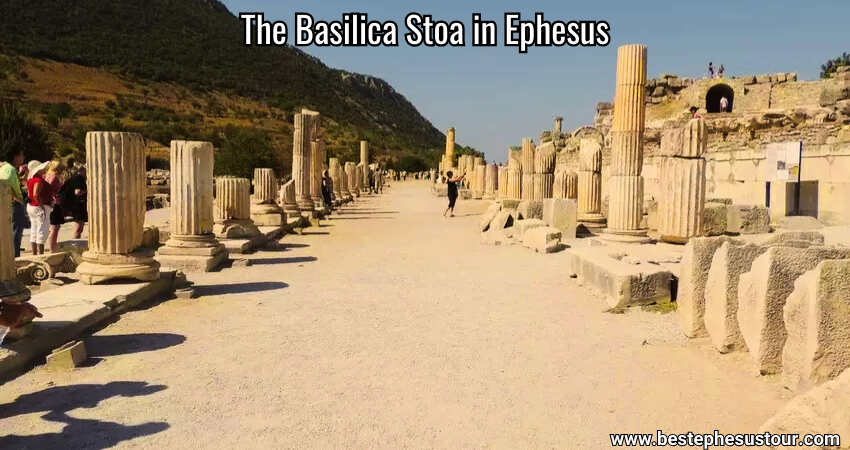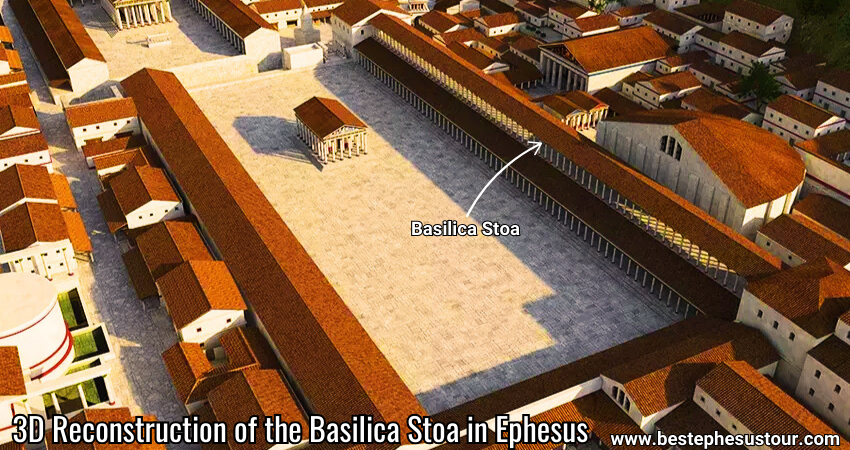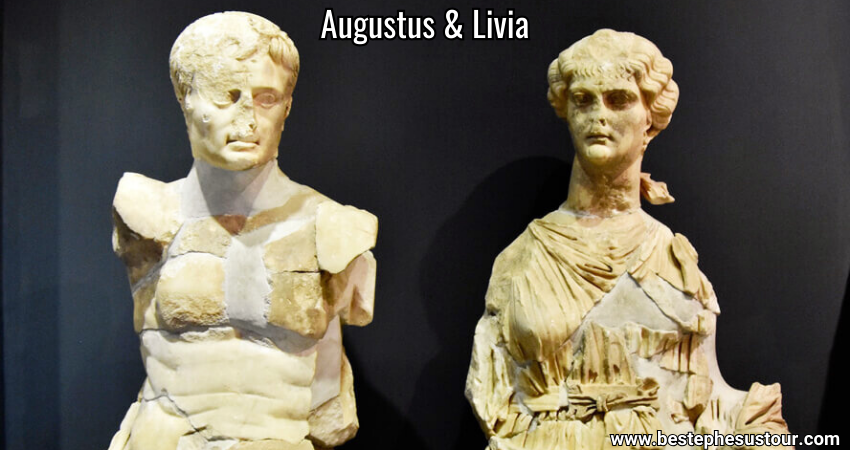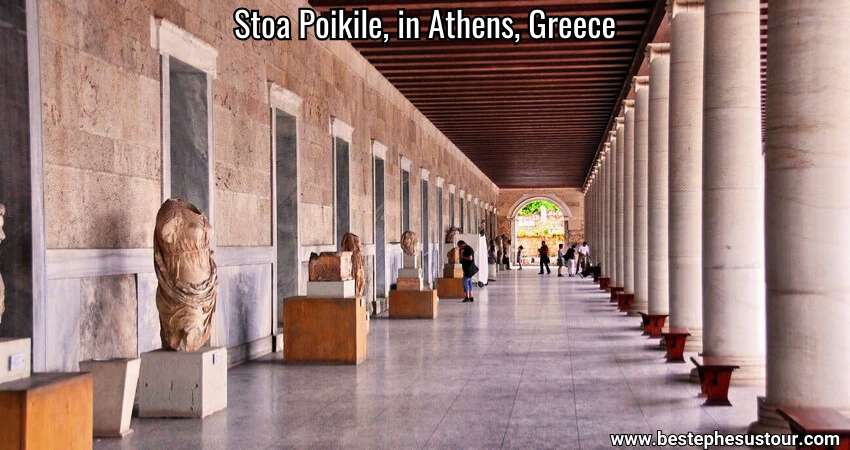The stoa on the north of the State Agora was converted into a basilica during the period of Emperor Augustus (27 BC-14 AD). The Basilica, which is 160m long, had a wooden roof. Today, only some of the columns are left.
Table of Contents

Column Styles in the Basilica
During the Augustan period, the capitals of the columns were in Ionic style featuring bull-heads. However, they were changed to Corinthian style during the late Empire period. It was later discovered during excavations in Ephesus that the stoa on which the Basilica was built had a depth of 1.30m.
Access to the Basilica
After entering the ancient city of Ephesus through the Magnesia Gate (Upper Gate), visitors can access the Basilica via three separate doors found in a smaller stoa to the east.

Changes During the Byzantine Period
The Basilica stoa in Ephesus had some changes during the Byzantine period and lost its importance.
Statues of Augustus and Livia
The statues of Augustus and his wife Livia exhibited in the Emperor’s Hall of the Ephesus Archaeology Museum, were found there. The statues were ruined, and there was a crucifix on both of their foreheads.

What Does “Basilica” Mean in Ancient Rome?
The term “basilica” originally referred to a law court or a place with a large oblong hall or building with double colonnades for public assemblies in Ancient Rome. However, following the adoption of Christianity during the late Roman period, the term came to designate churches that were formally recognized and granted special privileges by the Pope.

The Relationship Between Stoicism and the Stoa
Stoicism was a significant philosophical school during the Hellenistic period. The name comes from the “Stoa Poikilê” (Painted Porch) in the Agora of Athens, which was decorated with mural paintings and served as a gathering place for early Stoic philosophers to discuss and teach their ideas.





